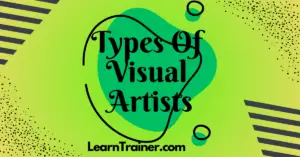10 Essential Graphic Design Questions Every Student Should Ask!
As you immerse yourself in the principles of visual communication, understanding the nuances of design theory, and the ever-evolving tools of the trade, it’s crucial to ask the right questions that will help shape your learning experience. In this blog post, we’ll explore 12 essential graphic design questions that every aspiring designer should consider. From clarifying your design process and discovering your unique style to understanding the importance of feedback and staying current with industry trends, these questions will not only guide your studies but also prepare you for a successful career in graphic design. Let’s dive into the key inquiries that will inspire your creativity and elevate your design practice!
What is my design process and how can I refine it?
Understanding your design process is crucial for any graphic design student aiming to grow and evolve in their craft. Your design process serves as the backbone of your creative journey, guiding you from the initial concept to the final execution. Begin by breaking down each stage of your process: how do you gather inspiration? Do you conduct thorough research or jump straight into sketching ideas? Identifying these steps will help you pinpoint areas for improvement.
Once you have a clear outline of your current process, reflect on its effectiveness. Are there bottlenecks where you often find yourself stuck? Perhaps you spend too much time on the brainstorming phase, or maybe you rush through revisions without giving each design the attention it deserves. Consider setting specific goals for each project, allowing you to stay focused and streamline your workflow.
Experimentation is also key to refining your design process. Try different techniques, tools, or methodologies—such as Agile or Design Thinking—to see what resonates best with you. Additionally, seek feedback from peers or mentors, as their insights might reveal aspects of your process that you hadn’t considered.
Lastly, remember that your design process is not set in stone; it will evolve as you gain experience and discover new strategies. By continuously assessing and refining your approach, you’ll not only enhance your skills but also develop a unique creative style that sets you apart in the world of graphic design.
How do I discover and develop my unique design style?
Discovering and developing your unique design style is one of the most exciting and personal journeys you can undertake as a graphic design student. It’s a process that blends self-exploration with practical experience, allowing you to express your creativity in a way that feels authentic to you. Start by immersing yourself in diverse design influences; explore a wide array of styles, from modern minimalism to bold retro aesthetics. This visual collage will not only inspire you but also help you identify patterns and elements that resonate with your sensibilities.
Next, practice is key. Experiment with different techniques and tools, whether it’s digital design software or traditional hand-drawn methods. Don’t hesitate to create pieces that reflect your interests, even if they feel outside the norm. Engage in personal projects that excite you, as they are often where your true style begins to shine.
Lastly, be patient and allow your style to evolve naturally over time. Your unique design voice will emerge through a combination of influences, skills, and experiences, so embrace the journey. Remember, the most successful designers are those who remain true to themselves while continuously learning and adapting. By asking yourself this essential question and pursuing your passion, you’ll be well on your way to crafting a style that is not only distinctive but also deeply personal.
What role does feedback play in improving my designs?
When you present your designs to peers, instructors, or even potential clients, you open the door to a wealth of perspectives that can highlight both strengths and areas for improvement. Constructive criticism provides insights that you may not have considered, encouraging you to view your designs through a different lens.
Engaging with feedback allows you to identify patterns in your work, such as recurring mistakes or consistent stylistic choices that may not resonate with your audience. It can also foster a deeper understanding of design principles and user experience, pushing you to make more informed decisions in your projects. By actively seeking out and embracing feedback, you cultivate a collaborative environment that not only enhances your current work but also builds your confidence and skill set for future projects.
Moreover, feedback is crucial in understanding the effectiveness of your designs in real-world applications. It provides an opportunity to test your ideas, refine your messages, and ensure that your visual communication aligns with the intended objectives. Remember, no design is ever truly ‘finished’—it evolves through the insights gained by listening to others. Embracing feedback not only improves your designs but also prepares you to thrive in the dynamic realm of graphic design, where adaptability and growth are key to success.
How can I effectively use design software and tools?
Mastering design software and tools is a crucial aspect of becoming a proficient graphic designer. As a student, it’s vital to approach this learning process with curiosity and a structured mindset. Start by familiarizing yourself with the most commonly used design programs, such as Adobe Creative Suite (Photoshop, Illustrator, and InDesign) or alternatives like Canva and Sketch.
Begin by exploring the numerous tutorials available online, many of which are free and cover everything from basic functionality to advanced techniques. Platforms like YouTube, Skillshare, and LinkedIn Learning offer a wealth of resources that can help you understand specific tools and features within the software. Don’t hesitate to dive into the official documentation and user forums for these tools as well; they often provide insights that can enhance your understanding.
Practice is paramount. Start small by working on personal projects that excite you—this could be anything from creating a logo for a fictional brand to designing a poster for an imaginary event. Experiment with different functions, techniques, and styles to see what resonates with you. Additionally, seek feedback from peers and mentors; constructive criticism can lead to significant improvements in your work.
Finally, consider how to integrate design tools into your workflow effectively. Organize your workspace, create shortcuts for frequently used features, and familiarize yourself with the software’s interface to streamline your design process. The more comfortable you become with these tools, the more creatively you’ll be able to express your ideas. Remember, mastering design software is not just about learning the technical aspects but also about understanding how these tools can bring your creative vision to life.
Graphic design is a profession that is constantly growing. Despite the massive growth of this profession, there are still many gaps in our understanding of its fundamentals. These fundamental gaps are the focus of this blog. This blog takes a look at the common questions that students have about graphic design. It is a collection of the most frequently asked questions from students. If you’re curious about design, this blog is for you.
What Is The Most Important Element Of a Design?
The most important element of a design is the idea behind it. The idea is what makes a design great, and the more you can focus on the idea, the better your design will be.
The other most important element of a design is the message it conveys. If a design is to be successful, it needs to have a clear and simple message that is easily understood. The key to designing a successful design is to keep the message straightforward.
What Should You Consider When Creating a Graphic Design For a Logo?
There are so many factors to consider when you are creating a logo. You should consider the culture and industry of your company and the type of services that they offer.
The color scheme should represent the company as well as the mood they are trying to create. It is important to remember that the logo is not just a symbol of your company; it is a representation of what they stand for. Your logo should reflect your company’s personality and give its customers a good impression.
The second thing to think about when creating a logo is that it should be distinctive. A good logo should have a simple design with a strong symbol.
For example; the Nike swoosh symbol is well-known because it’s simple and recognizable.
A good logo also needs to be memorable. The best way to create a memorable logo is by using a symbol that represents the company.
What Is The Difference Between a Good Design And a Bad Design?
Good design is simple, easy to understand, and creates a sense of familiarity. Bad design is complicated and overwhelming. Good designs are easy to use and understand. Bad designs are difficult to use and understand. Good designs have a clear objective, while bad designs have multiple objectives.
What Is The Most Important Tool For Graphic Design?
For graphic design, many tools are essential to the job. One of the most important tools is a computer with a graphics card because it allows you to use programs like Photoshop and Illustrator.
Another important tool for graphic design is a digital camera. It is used for taking photos of your work and for scanning photos from magazines or old photographs.
Other important tools for graphic design are pencil and paper because they are used to sketch out ideas before you start working on them digitally.
What Is The Significance Of The Use Of Color In Graphic Design?
The use of color in graphic design is a powerful tool that can help create an emotional response from the audience.
The colors you choose can either be used to create a sense of warmth and comfort or a sense of excitement and stimulation. The colors you choose should also be able to represent the overall theme of your design.
For example, if your design is about food, then you should use bright colors like orange, red, yellow, and green. If your design is about the outdoors, then you should use colors like blue and green. There are many benefits of using color to convey a message.
Is There a Secret to Designing an Effective Logo?
When designing a new logo, it’s important to consider the meaning of the name and what the logo will stand for. When designing the logo for your company, it’s important to pay attention to the colors that are used. Keep in mind that colors can make or break a logo.
If you want to create an eye-catching logo, try using vibrant colors like red, blue, green, yellow, and orange.

